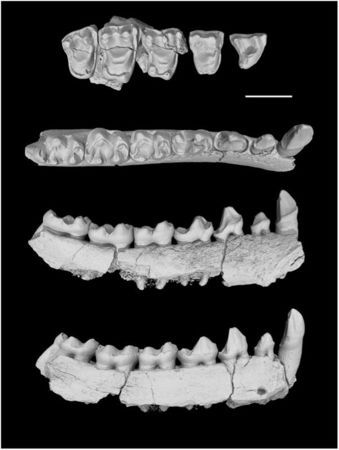| Location: Home > News > Events |
| Primate fate: Chinese fossils illuminate key evolutionary period |
|
Reuters May 6, 2016
By Will Dunham WASHINGTON (Reuters) - A treasure trove of fossils of six furry critters that inhabited the trees of southern China 34 million years ago is providing a deeper understanding of a pivotal moment in the evolution of primates, the group that eventually gave rise to people. Scientists on Thursday announced the discovery of the remains of six previously unknown extinct primate species: four similar to Madagascar's lemurs, one similar to the nocturnal insect- and lizard-eating tarsiers of the Philippines and Indonesia, and one monkey-like primate. Primates are among the most environmentally sensitive of all mammals. These lived shortly after a dramatic episode of global climate change that brought cooler, drier conditions that triggered the extinction of all primates in North America and Europe and devastated Asia's primates. The primate lineage that led to monkeys, apes and people, called anthropoids, originated in Asia, with their earliest fossils dating from 45 million years ago. Only later, about 38 million years ago, did some anthropoids migrate to Africa. It was on that continent 200,000 years ago that humans arose. But if anthropoids first appeared in Asia, why didn't apes and people emerge there, too? The big chill 34 million years ago is the reason. This juncture represented "a critical filtering episode during the evolutionary history of primates," said paleontologist Xijun Ni of the Chinese Academy of Sciences' Institute of Vertebrate Paleontology and Paleoanthropology. Before the temperatures dropped, Asia's primates were dominated by anthropoids. Afterward, they were dominated by lemur-like primates, with the monkey-like ones decimated. To illustrate that, just one of the six new species unearthed in China's Yunnan Province was an anthropoid. Africa was less affected by the plunging temperatures, and its anthropoids became larger and more diverse. "If early Asian anthropoids had not been able to colonize Africa prior to the (climate cooling), then we certainly would not be here to ponder such things," University of Kansas paleontologist Chris Beard said. "Likewise, if Asian anthropoids had not suffered such big evolutionary losses (after the cooling), our distant ancestors might have evolved in Asia instead of Africa," Beard added. The lone anthropoid in the group, a small, monkey-like primate named Bahinia banyueae, probably resembled some of today's smaller South American monkeys such as marmosets, Beard said. Its teeth suggest its diet was mainly fruits and insects, Beard added. The six species were represented by fossil teeth, jaws and a few other bones. The research was published in the journal Science. (Reporting by Will Dunham; Editing by Sandra Maler) |
